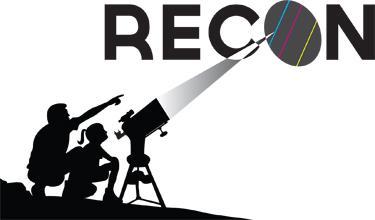RECON
Research and Education Collaborative Occultation Network
Have you ever wondered what’s found in the outer reaches of our solar system? It turns out many, many objects orbit the sun out past Neptune. Called trans-Neptunian objects (TNOs), these frozen bodies were formed at the same time as the rest of our solar system – making them close to four and a half billion years old. Determining the sizes of these objects will help us better understand their formation and composition, and could tell us a great deal about the origins of our solar system. One population of these objects is called the Kuiper Belt. Pluto was the first Kuiper Belt Object (KBO) discovered in 1930. Since 1992, we have discovered over a thousand KBOs and it is estimated that there are more than 100,000 objects larger than 100km in diameter in this region of our solar system. Our goal is to measure the sizes of a particular category of these objects known as “cold classical KBOs.” These objects are in nearly circular orbits around the sun that have likely not been altered since the formation of the solar system.
To measure the size of a TNO, we use the shadow it casts on Earth as the TNO moves in front of a distant star – an event called an occultation. SOSS is part of a network of telescopes spanning from southern California up to Vernon that try to capture these occultation events. Throughout the year, we take part in approximately 5-7 occultation events, where we take our telescope out in the middle of the night onto the upper school field.
Anyone interested in joining this group and helping out during these occultation events, should contact Mrs. McIntyre either directly at the school or by email at [email protected]
